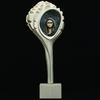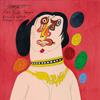The Color Woodblock Prints of Gustave Baumann
- October 24, 2019 17:14


One of America's finest color woodblock artists, Gustave Baumann is widely credited with the revival of this art form in the 20th century. His prints, made from multiple intricately detailed hand-carved woodblocks, are best known for their vivid coloration, striking color contrasts, bright, bold designs, and expert craftsmanship. Many of the works feature his characteristic framing device of tiny dots that serve as a border for the image.
Born in Magdeburg, Germany in 1881, Baumann and his family relocated to the United States when he was a child. They eventually settled in Chicago, where he later worked as a commercial engraver while putting himself through night school at the Art Institute of Chicago. He traveled to Germany in 1904 to study wood block printing at the Kunstgewerbeschule ("School of Arts and Crafts") in Munich.
Upon his return to the United States, Baumann received international acclaim when one of his color woodcuts won the gold medal at the 1915 Pan-Pacific International Exhibition in San Francisco.
“Rain in the Mountains" highlights Baumann's mastery of intense, brilliant coloration with sharp, dramatic contrasts. It features the village of Arroyo Seco, seven miles north of Taos.

The luminous and stunning work, “From a Hillside Garden”, is part of the first edition that was printed in 1941. It includes a background of softly shining aluminum leaf and offers a close-up view of a bouquet of yellow and orange day lilies. The work was inspired by the gardens of Hillside in Lydia Coonley Ward's home in Wyoming, New York, an area the artist had visited years before in 1917.
“Church, Ranchos de Taos”, printed ca. 1919-20 shows the historic adobe church of San Francisco de Asis, commonly referred to as Church Ranchos de Taos, built around 1730 near the foothills of the Sangre de Cristo mountains in New Mexico. It has been the subject of countless works of art over the past two centuries, and the artist chose the view of the rear exterior of the church with a procession of parishioners at the lower left.
For additional information about the artist, please visit www.kargesfineart.com




















